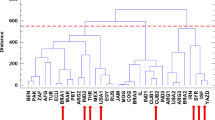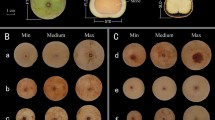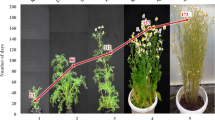Abstract
SAMPLES have been obtained of seed described as Ethiopian ‘rape’, imported into Europe for oil extraction. Plants grown from the seed corresponded with specimens in the Kew Herbarium named Brassica integrifolia (West) O. E. Schulz var. carinata (A.Br.). This plant is cultivated in Ethiopia and adjacent north-east African territories. Most taxonomists regard this species as a mustard, and some include it in the B. juncea complex which contains a number of mustards of commercial importance.
This is a preview of subscription content, access via your institution
Access options
Subscribe to this journal
Receive 51 print issues and online access
$199.00 per year
only $3.90 per issue
Buy this article
- Purchase on Springer Link
- Instant access to full article PDF
Prices may be subject to local taxes which are calculated during checkout
Similar content being viewed by others
References
Winton, A. L., “The Microscopy of Vegetable Foods” (New York, 1916).
Author information
Authors and Affiliations
Rights and permissions
About this article
Cite this article
VAUGHAN, J. Seed-coat Structure of Ethiopian ‘Rape’. Nature 178, 1188–1189 (1956). https://doi.org/10.1038/1781188b0
Issue Date:
DOI: https://doi.org/10.1038/1781188b0
Comments
By submitting a comment you agree to abide by our Terms and Community Guidelines. If you find something abusive or that does not comply with our terms or guidelines please flag it as inappropriate.



